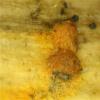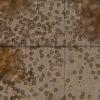
19-01-2013 14:23
 Yannick Mourgues
Yannick Mourgues
Bonjour à tous.Encore sur Buxus. Sous l'écorce d

15-01-2013 19:14
 Yannick Mourgues
Yannick Mourgues
Bonsoir à tous.Sous l'écorce d'une branche de Bu

19-01-2013 11:45
 Yannick Mourgues
Yannick Mourgues
Sans recours à l'anamorphe, y a-t-il un moyen de

19-01-2013 00:19
Esquivel-Rios EduardoHi AllHere a nice pictures of Ophyocordiceps amazo

17-01-2013 12:52
Bonjour, Hello J'ai trouvé cette espèce sur u

17-01-2013 09:32
Salvador TelloHola a todos.Este ascomiceto estaba en una zona de

16-01-2013 20:47
Jan EcksteinDear all, I am preparing a manuscript about Lampr
Anamorphe sur Buxus
Yannick Mourgues,
19-01-2013 14:23
 Bonjour à tous.
Bonjour à tous.Encore sur Buxus. Sous l'écorce de branches mortes au sol. Avec Geejayessia desmazieri et Disosphaerina miribelli (+anamorphe Sarcophoma).
Sorte de demi-sphère fibreuses jaune-oeuf. Ostiole formé d'une petite ouverture arrondie au sommet. Directement sur le bois qui se trouve coloré du même jaune plusieurs mm2 autour. Remplies de conidiospores brunes 4,3-5,2x3,4-3,9 um Q=1,2-1,4 N=30
Une idée ?
Yannick
Alain GARDIENNET,
19-01-2013 14:30
Re : Anamorphe sur Buxus
Salut Yannick,
As-tu observé une conidiogénèse ?
Les conidiospores me font penser à celles du genre Lichenoconium, coelomycète lichénicole. Mais rien à voir avec ce que tu montres.
Alain
As-tu observé une conidiogénèse ?
Les conidiospores me font penser à celles du genre Lichenoconium, coelomycète lichénicole. Mais rien à voir avec ce que tu montres.
Alain
Yannick Mourgues,
19-01-2013 14:50

Re : Anamorphe sur Buxus
Non, je n'ai rien observé de tel. Je vais y regarder de nouveau.
Y
Y

